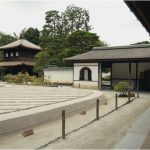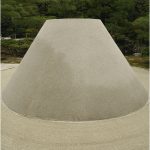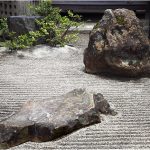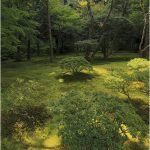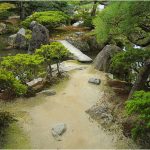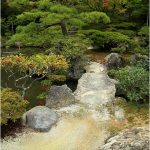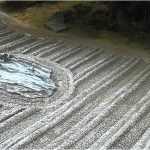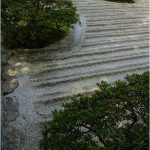Only five years after the long and devastating Onin war (1467-1477) shogun Ashikaga Yoshimasa started to build his retirement villa in the eastern part of Kyoto at the foothills of mount Tsukimachi. The inspiration for the construction of the site he found in Saiho-ji temple and in the Golden Pavilion built by his grandfather in 1397 on the other side of Kyoto. Yoshimasa was apparently more interested in arts and culture than in power and politics. He was always in contact and worked with renowned specialists in different artistic disciplines. According to his will, after the death of Yoshimasa the villa was transformed into the temple. An important reconstruction took place in 1615 and a dry garden was created. Since then, the temple has two gardens. The original and spectacular “karesansui” (dry garden) in front of the Silver Pavilion and the Main Hall consists of a bed of white sand with diagonal strips called “Sea of Silver Sand” and of a perfect truncated cone called “Moon viewing Platform”. From the dry garden there is a smooth passage to the older stroll garden. The stroll garden consists of a pond with islands and several bridges. The ground is covered with moss and a winding path helps discover its different elements. The temple is one of Kyoto World Cultural Heritage Sites designated by UNESCO.
